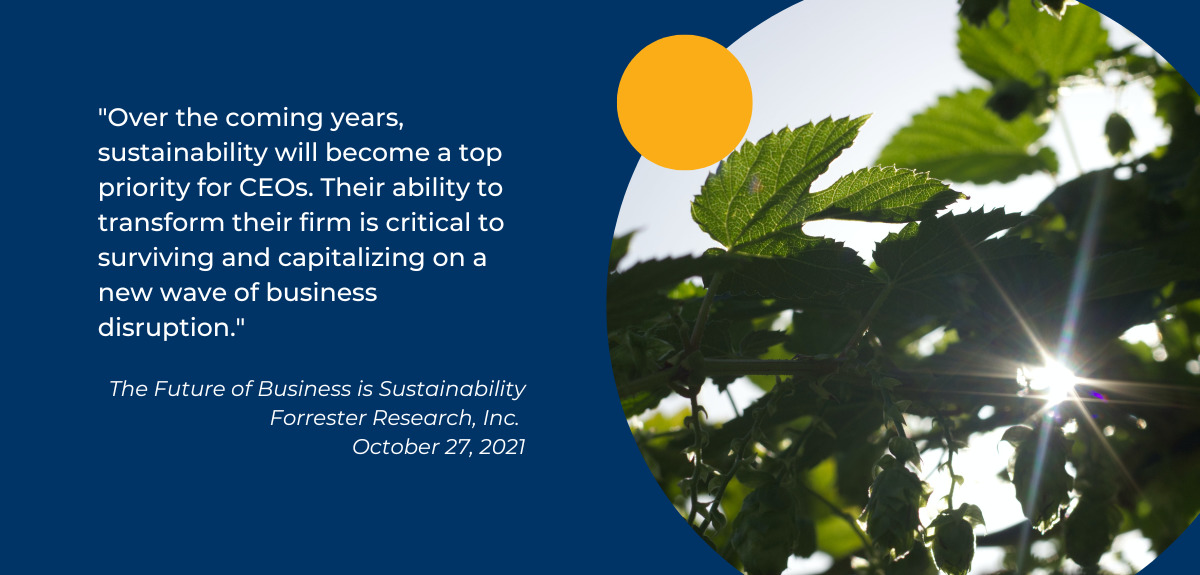POSTED : June 16, 2022
BY : Sukesh Belenje
Categories: Business Optimization,Data & Analytics

Corporate environmental sustainability initiatives are increasingly important to enterprise organizations, and for good reason. According to Forrester, “As more government mandates take shape around the world, investor scrutiny on sustainability issues increases, and customers demand tangible action, all organizations will need to craft a meaningful level of sustainability strategy.”[i]
The good news is that a well-crafted corporate environmental sustainability practice is good for humanity, but also good for business. Companies that thoughtfully and meaningfully address the environmental sustainability concerns of their key stakeholders, such as customers, employees, partners, investors, and industry analysts, will benefit from increased sales, profitability, employee retention, investment, and brand equity.
Below, we highlight some of our best practices for implementing a corporate environmental plan, using sustainability data, that will help you to reduce your carbon footprint.
One of the top environmental sustainability concerns of key stakeholders is climate change. Accordingly, many corporate environmental sustainability roadmaps include a plan for reducing the Greenhouse Gas emissions that contribute to climate change. As carbon dioxide represents the majority of Greenhouse Gas emissions from human activity, many companies work on decreasing these emissions specifically. This is also known as reducing “carbon footprint.”
One way that you can reduce your enterprise organization’s carbon footprint is by reducing your energy consumption:

It’s easy for companies to become overwhelmed by the amount of data and analytics required to properly assess, manage, and report on carbon emissions, especially if you include carbon emissions from upstream (supplier and partner) and downstream (employee and consumer) activities related to the products and solutions you sell. Here’s what we recommend:
Per Forrester: “When implemented correctly, a firm’s sustainability efforts will build trust, increase resilience, and open new markets. But the journey to becoming a future-generation-safe firm, and the benefits that it garners, requires not only public commitment but a well- executed roadmap to avoid loss of trust with stakeholders, customers, and employees.”[ii] Reducing your carbon footprint is an achievable goal that will benefit all stakeholders involved—and the planet as a whole.
For information about how our Sustainable Experience Engineering (SEE) practice can help your organization leverage sustainability data to transform its corporate environmental sustainability efforts, please contact us.
[i] Assess Your Own Sustainability ROI, Forrester Research, Inc., April 22, 2021
[ii] Guide Your Sustainability Program With The Forrester Sustainability Maturity Model, Forrester Research, Inc., October 27, 2021

EVP of Emerging Industries

Director of Client Services

Engagement Lead, Strategy and Design